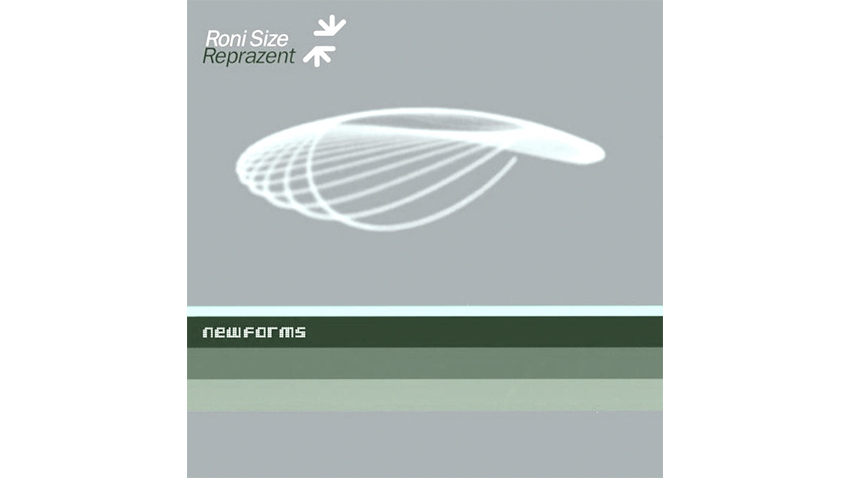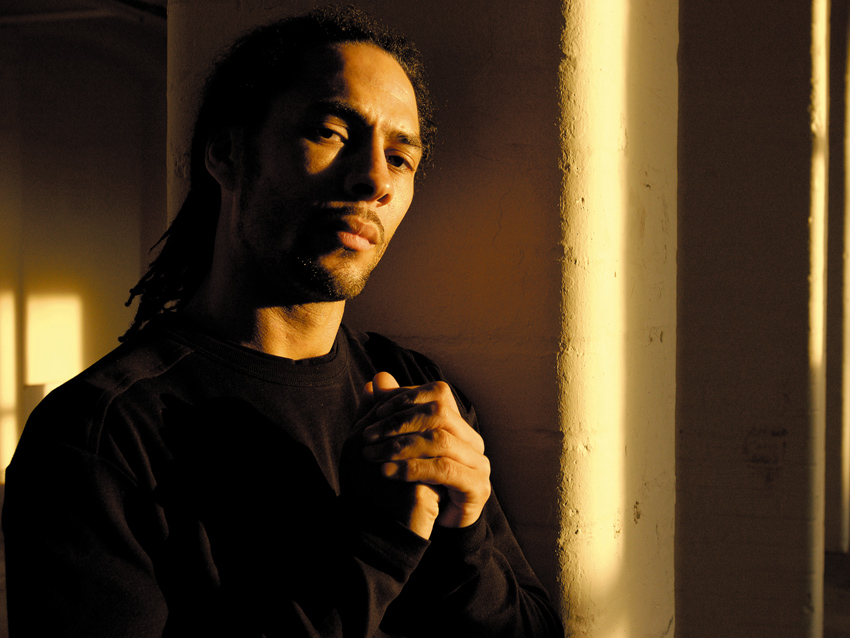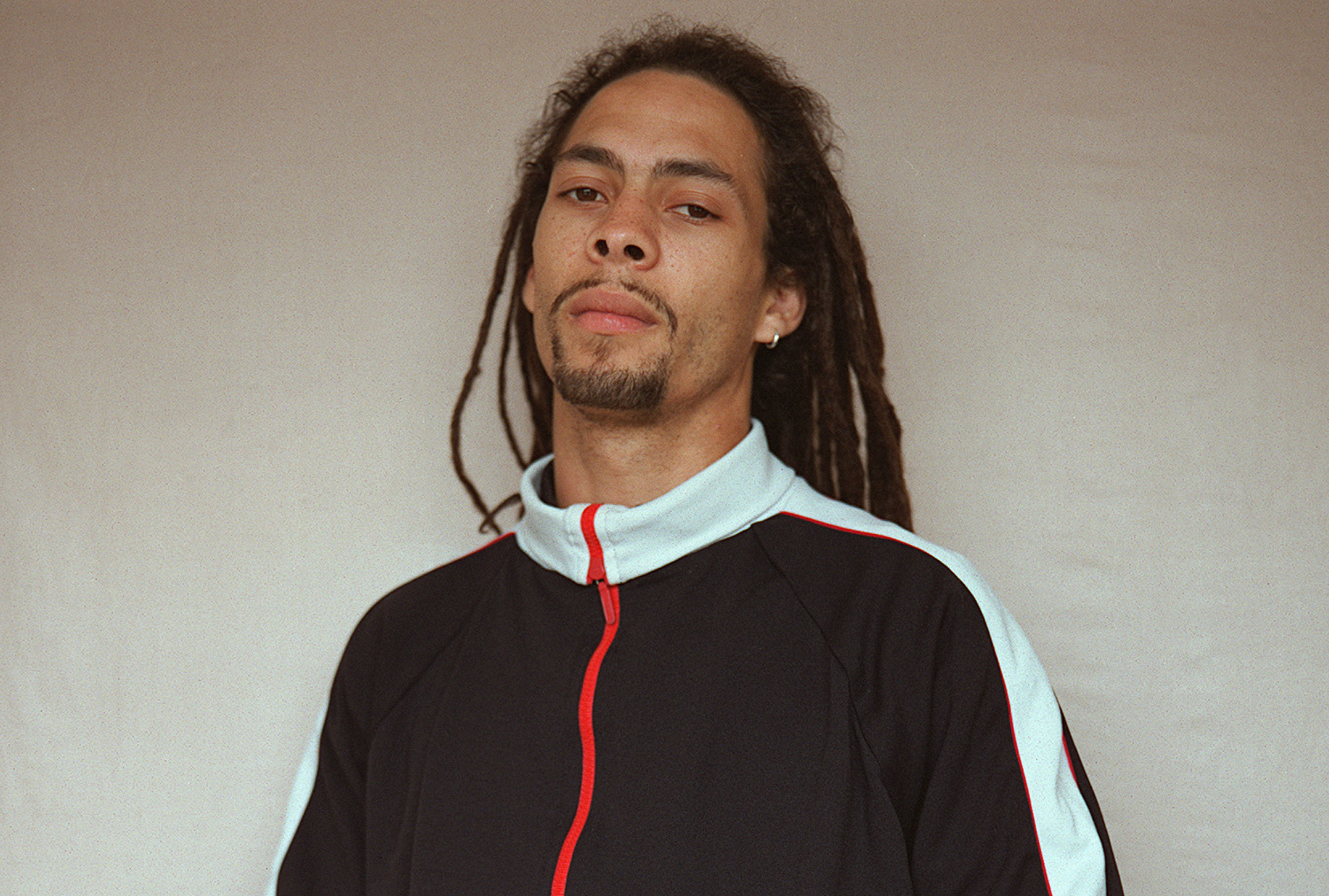Classic album: New Forms by Roni Size and Reprazent
Roni Size takes us though his classic debut album, track by track

Sometimes you just can't trust studio monitors. If you want to give your latest tune a proper rinsing, you need to do the car test. Roni Size swears by it. "You'd make your tune, put it on the car stereo and go for a drive," he says. "It would always sound better when you're driving down the road. Pop the window - if passers by are shaking their heads because there's too much bass, then you're on to something."
It's 1997 and Size has been working on tracks for his debut long player. The spanking new Fiesta RS Turbo, and its soundsystem, were bought with an advance from his new label, Gilles Peterson's Talkin' Loud.
He'd been snapped up (declining an offer to join the Mo' Wax camp) because he'd been making some major noise with his killer remix work and game-changing 12-inches on labels including his own Full Cycle, and Bryan G and Jumping Jack Frost's V Recordings.
The step up to this exciting and prolific Acid Jazz label now, crucially, opened Size's eyes to the possibility of making new music using real musicians. Every time he rolled through the label's HQ he would see bands rehearsing and cogs would whir as he wondered how to translate that into his drum 'n' bass sound.

© David Murphy/Sygma/Corbis
Back in his native Bristol he set about forming Reprazent - the collective of musical talent that formed around him, fleshing out this vision for a hybrid of instruments and samplers.
He pooled local talent, and talent he'd seen on the road. "I brought in my sidekick Krust and a young lad by the name of DJ Die, who was already a pretty established DJ in Bristol," says Size. "Then there was Suv, who was a friend of Krust's as they were part of a crew called Fresh 4."
Want all the hottest music and gear news, reviews, deals, features and more, direct to your inbox? Sign up here.
Singer Onallee was recruited because she used to do jingles for him back in the pirate radio days, and Dynamite MC was top of the rapper list after Size shared a bill with him at a rave a few years earlier. "After I'd seen him it took me a year to track him down!"
Si John, who brings the distinct organic double bass licks that you hear on standout tracks like Brown Paper Bag, was spotted at Glastonbury."I saw him up there on trumpet, singing, playing the bass and hosting," says Size. "I knew right then that if I ever formed a band he would be my soldier."

With his army in place he took to the studio. The results would be sublime. New Forms seemed to garner universal acclaim and would present this new, vital sound of Drum 'n' Bass in a way that a mainstream audience could completely 'get' without losing any credibility in the underground circles he and his crew had cut their teeth in.
Tracks like Heroes took Soul into a new digital decade, while the aforementioned Brown Paper Bag was a hybrid of slick drum programming and futuristic Jazz that made it an instant classic with ravers and coffee table heads alike.
The album took the world by storm, racking up massive sales, scooping the Mercury Music Prize, and making Drum 'n' Bass the hottest sound of the moment.
It might have been Roni Size's music blasting out of his car as he cruised St Paul's, checking the levels, but in 1997 we were all along for the ride.
1. Railing
"Me and Dynamite MC put this together real quick. I think it was the first time we'd been in the studio together. We made it late one night, but forgot to save it. Then the power went out in my house, because the electricity was on a meter, and we lost the DAT with all the samples on. When we tried to master it off that DAT it was fucked and got tangled up in the machine. So what we did was to master it off the dubplate version we had. The label had no idea!
"It was the first track we recorded for the album, but ended up being the last track we put on it."
2. Brown Paper Bag
"This was the last track I made for the album. I thought I'd finished everything up and I was quite happy with it as it was. Then I did this remix for Nuyorican Soul [It's Alright, I Feel It!], and as soon as I finished that I knew that I was onto something new, and wanted more.
"I recorded a load of sounds with my bass player Si John, and a lot of acoustic guitars with a guy called Steve Graham. Now I had all these elements spread across my keyboard, and before I knew it I had Brown Paper Bag."
3. New Forms
"I wanted this to be the first track on the album, originally. Me and Suv came up with the beat and I sent it out to Guru from Gang Starr, R.I.P, as I was a big fan. He basically said,
'It's not for me, but I might have someone who'd be interested'. So he gave it to Bahamadia.
"When I got the vocals back they were pretty much out of time. She couldn't really get the rhythm and was all over the place. So I took every word and pieced it back together in the Roland S-760 sampler and looped bits at the endto make it longer."
4. Lets Get It On
"There are two guys that I've worked with since I was about 17 called Fat Man and Vinnie. They're responsible for producing the Spice Girls under the name Absolute. They showed me production techniques when I first started, and were the first people to ever bring me into a studio.
"They gave me loads of sounds back-in-the-day. I've had guitar parts, bass sounds. You name it. Some of the sounds on Lets Get It On came from the stuff they gave me. I just added the Amen and kept the breaks rolling.
"This track really represents me getting to know the S-760 as well. You could get long loops going for a change. It was like, wow!"

© David Murphy/Sygma/Corbis
5. Digital
"This features vocals from Onallee. It was all new to me as I'd never done a vocal track before. I'd normally write something on my own, or do a remix.
"She just came in and starts talking all this stuff about 'video to digital', and, like New Forms, I loaded them all up into the sampler and made it make sense.
"For me, I was trying to make a vocal track. I wanted to put a change up in there too, so that's why you get that breakdown. This track was basically me learning how to make vocal tracks."
6. Matter of Fact
"This is a drum workout. This is me in the mode now - I can go left, I can go right. I had more freedom with the new Roland S-760 sampler. I can pan breaks. I'm rolling out on this track. It ain't for the dance floor, this one. This is when you put your headphones on - just check out what's going on with the drums.
"I was using Alesis ADAT machines. It could be mind numbing. Clive Deemer, our drummer, would come in and do drum sessions. DAT takes ages to rewind and ages to forward. I had two of them, and I had to get them to line up with the Atari. It was a drama!"
7. Mad Cat
"This came before Brown Paper Bag, but you can hear that style developing where I'm messing with the drums. I'd get Clive in, record him to ADAT and resample all of it into the S-760.
"I had banks of Clive drums at my fingertips now. Then I used basses from Si John, and that's Mad Cat. I was excited that I had these sounds to play with now, so would go on mad workouts to see what I could make. It came out really Funky and really Jazzy. But that's what we do - we do Funk, we do Jazz, but it still sounds like a Drum 'n' Bass record, right?
8. Heroes
"I'd just made a record called It's Jazzy, and that was going off. So I just took the same drums and thought it would be good to do something with them and a vocal, so Onallee came back in and she nailed it, man.
"I used a lot of guitar parts that I had from a guy called Tyrell on this track. Paul Martin from Talkin' Loud introduced us. It sounded like something from U2, which I thought was great. The guy wasn't happy with what he had done, but I loved it. I'd never heard guitars like that before! I'd always had to sample them from a record for 1.2 seconds."
9. Share the Fall (Full Vocal Version)
"This is the record that I'm most proud of. It came from me, Krust and Die just sitting down and talking about sounds. We knew what we were doing. We were comfortable working together. I'd talk about a break, then someone would suggest adding a dirty bass line as someone else imagined what it would be like chopping this or that up, adding vocals, and then having a dirty drop. You know what I mean?
"We talked about how the tune was going to come together, then I went away and did all the engineering on it. We sat there and described how the record was going to sound, then turned round and did it exactly like that."
10. Watching Windows
"Talking of breaks, this track was heavily influenced by watching the Hip-Hop movie Wild Style. I love that film. That, along with Babylon would be my two films to take to a desert island.
"Another Onallee vocal here. I think she brings a great vibe again. The whole track is different. It's not a Drum 'n' Bass track. I think we ended up making a Drum 'n' Bass version.
I had to take her vocal and time stretch it to slow it down to fit. You can hear it on that version of the record - It sounds all fucked up. It would be a lot easier to get thateffect now."
11. Beatbox
"Me and Suv must have been… on a creative one when we did this! We'd just make each other laugh. There was never a dull moment when Suv was around.
"We was in the studio and he was just like, 'F*** it! Let's just make our own breaks.' We just cracked up and really got into it. I did a snare, he might do a kick and we stuck it in the sampler. We spent the whole night smoking weed and making weird sounds - 'You do a siren!' We'd be sat there trying to do a 40Hz kick drum."
12. Morse Code
"We used to open the live shows with this one. It's got some actual Morse code at the start. I should decode it really. It goes forward and backwards though - that was the one thing about the S-760 that no other sampler did. That was our technique at the time to make sounds lasts longer.
"When the sample was coming to the end of its loop, you'd play it backwards and put a release on it and it would get longer. We didn't have to really buy a digital delay.
That was one of the tricks we had at the time that no one could get their heads around. It was beautiful for sweeping reversed delayed sounds in."
13. Destination
"This was a track that me and Die wrote as we were inspired by being around the Talkin' Loud label and them just giving me loads of records to listen to and absorb. It was like, 'Wow! Check out this record…What's this? Everything but the Girl? Listen to these horns at the beginning! Don't leave them clean on the record - I'm having that!'
"On this version of the album it ends with Destination, which just made perfect sense - you'd reached your destination.
"This album was made with a team. There's the core of producers, the musicians and vocalists, the label people. All the way down to the designer, Michael Williams, who I discovered sitting in the corner of the Universal office. Everything was a factor."


Future Music is the number one magazine for today's producers. Packed with technique and technology we'll help you make great new music. All-access artist interviews, in-depth gear reviews, essential production tutorials and much more. Every marvellous monthly edition features reliable reviews of the latest and greatest hardware and software technology and techniques, unparalleled advice, in-depth interviews, sensational free samples and so much more to improve the experience and outcome of your music-making.
